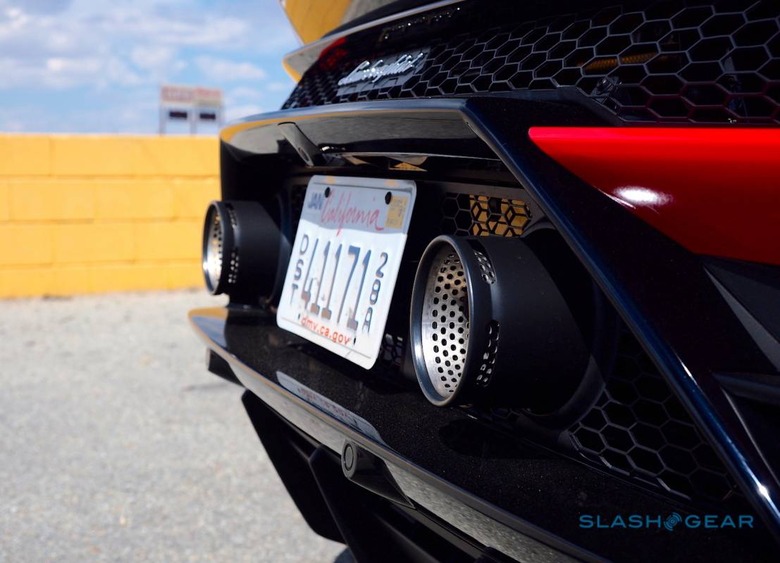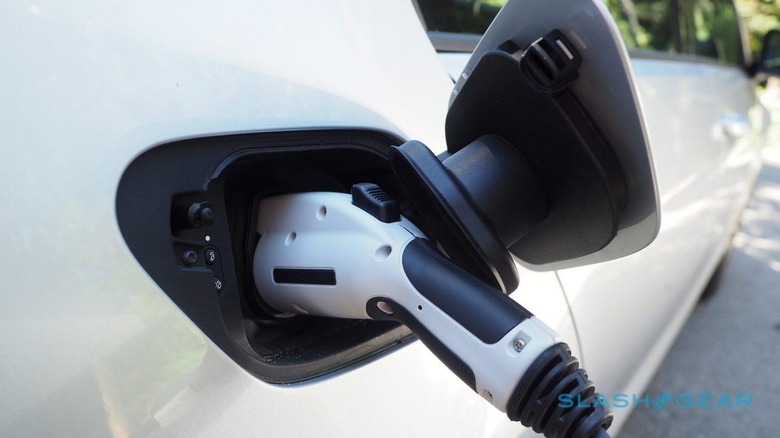Trump EPA Slashes Vehicle Fuel Economy And Pollution Rules
The EPA has finalized its new vehicle emissions regulations, completing the Trump Administration's long-sought overturning of Obama-era green standards for fuel economy. Dubbed the Safer Affordable Fuel-Efficient (SAFE) Vehicles Rule, the new standard slashes the requirements of CAFE and CO2 emissions to improve from around 5-percent each year under the old system, to 1.5-percent each year through model year 2026.
As a result, the US Environmental Protection Agency says, it predicts the average required fuel economy across the industry to reach 40.4 miles per gallon (mpg) by model year 2026. The 2012 standards projected 46.7 mpg economy.
President Trump has long been a critic of the previous Administration's economy demands of automakers. The argument he supported was that vehicles were being made too expensive because of overly-stringent economy and emissions requirements. As a result, American car owners were opting not to replace their vehicles.
The knock-on effect, so the argument went, was that it left American families missing out on newer, safer, more economical vehicles because they couldn't afford to upgrade. It also penalized American automakers, who were held to unrealistic standards, it was suggested. This new rule, now finalized, will cover vehicles from the model year 2021 through to 2026.

"NHTSA is required by Federal law to set fuel economy standards at the maximum feasible level for both passenger cars and light trucks, for every model year," the agency said in a statement. "If NHTSA determines that standards previously set are no longer maximum feasible, NHTSA can amend them. In determining what levels of CAFE standards would be maximum feasible, the law directs NHTSA to consider four specific factors: technological feasibility; economic practicability; the effect of other motor vehicle standards of the Government on fuel economy; and the Nation's need to conserve energy."
There are three key areas there in which the EPA says changes since the 2012 regulations have made an adjustment appropriate. For a start, oil prices are "substantially lower," the agency says, than they were in the original 2012 projections. There have also been significant increases in US oil production. Finally, there is "growing consumer demand for larger vehicles."
Ironically, while you might expect the easier rules to be popular among automakers, the reality is that many weren't strong supporters of reversals. In an open letter in early 2018, for example, Ford's top executives said they supported the tougher clean car standards, "and are not asking for a rollback."
One of the reasons for that industry reticence has been the fear of differing standards across the US, and abroad. In particular California's tougher emissions standards – which have been adopted by other states – have led to concerns that vehicles deemed compliant in some areas would not be in others. BMW, Ford, Honda, and VW all committed to 3.7-percent increases, year on year, in average economy in a deal with California in 2019.
Meanwhile, critics of the Trump EPA's focus have voiced concerns that the justifications are myopic in today's marketplace. Americans pay more for vehicles, they point out, because they prefer larger, better-equipped trucks and SUVs. And though still not as lax as Trump originally hoped to make the economy requirement – which would have brought the MY2026 target down to just 37 mph – the reduction still has implications for climate change.

Whether automakers choose to pass on the $1,000 that the EPA claims these softer targets will save them per-vehicle to consumers remains to be seen. Similarly uncertain is how electric vehicle sales may be impacted. Cheaper gas has already had an impact there, despite most automakers investing heavily into EVs and hybrids.
What seems certain is that the EPA's decision is unlikely to be accepted without a fight. Activists had already warned that they'd challenge the new rules in court, and while the ongoing coronavirus pandemic may make that trickier – something the EPA seems to have already capitalized on in pushing through other controversial changes – it almost certainly won't make it go away.
"This action is short-sighted and recklessly jeopardizes efforts to combat climate change and limit its most catastrophic impacts—impacts that harm communities, the economy, and investor portfolios," Danielle Fugere, President of As You Sow, a environmental non-profit said of the change. "Solutions to decarbonize the transportation sector, such as fuel-efficiency technologies and electrification, are already available and improving. This rule is sure to be challenged in the courts, adding unnecessary uncertainty to an industry under transition at a time of immense economic disruption."
Already there's at least one organization stepping up to do just that. "I am hoping that automakers know better than to go along with this illegal, ill-conceived and dangerous rollback," Gina McCarthy, president and CEO of the Natural Resources Defense Council (NRDC), said today "The clean cars program helped them bounce back from the 2008 financial crisis and achieve record sales. They should join us in fighting back. We'll be seeing the Trump administration in court."
According to the NRDC, the Obama-era rules have cut 455 million metric tons of carbon dioxide emissions, based on the EPA's own figures. These new, less-stringent standards will see vehicles contribute 1 billion additional tons of carbon dioxide, over the lifetime of the affected cars, it's suggested.
